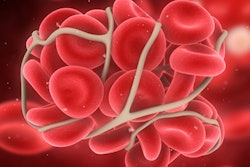
Coming a bit earlier in the month than usual, the release of the Medicare Physician Fee Schedule (MPFS) final rule for 2022 contains few changes from the rule proposed earlier this year.
 Sandy Coffta.
Sandy Coffta.The proposed rule reported a 2022 conversion factor (CF) of $33.5848 per relative value unit (RVU), but the final rule adjusts the figure slightly upward to $33.5983. This is a reduction of 3.71% from the 2021 conversion factor of $34.8931. In addition to this cut, practices will see an additional 2% payment reduction when sequestration resumes on January 1, 2022.
The U.S. Centers for Medicare and Medicaid Services (CMS) estimates the overall impact of the MPFS as follows:
| Proposed rule | Final rule | |
| Diagnostic radiology | 2% decrease | 1% decrease |
| Interventional radiology | 9% decrease | 8% decrease |
| Nuclear medicine | 2% decrease | 1% decrease |
| Radiation oncology and therapy centers | 5% decrease | 5% decrease |
These estimates are compiled using 2019 claims data, but the real impact of the 2022 MPFS can only be understood through an in-depth analysis of changes to the individual procedures billed by your practice. Our preliminary review of specific codes shows much larger decreases than the CMS estimate, and we will report on our volume-weighted analysis as soon as it can be completed.
Medicare Fee Schedule payment and valuation changes
The MPFS contains both payment policy decisions and adjustments to the Quality Payment Program (QPP). The payment policy decisions that will affect radiology are as follows:
Clinical decision support (CDS)
As expected, the penalty phase for failure to provide appropriate use criteria (AUC) has been delayed. It now will begin on the later of January 1, 2023, or the first of the year following the year in which the COVID-19 public health emergency (PHE) ends.
Thus, if the public health emergency is declared to be over in either 2021 or 2022, the AUC/CDS penalty phase will begin January 1, 2023; however, if the PHE extends into 2023 then the AUC/CDS penalty phase will begin in 2024.
Currently the AUC/CDS program is fully operational in a testing phase whereby Medicare will indicate whether a claim complies with the requirements or not, but payment will not be denied.
Payment to physician assistants
Medicare will make payments directly to physician assistants (PA) for their professional services and allow them to reassign such payments. This will align PAs with other midlevel providers such as nurse practitioners.
Until the Medicare system was temporarily modified by the 2021 Consolidated Appropriations Act for the pandemic, services provided by PAs could only be billed by their employer, which limited the ability of radiology practices to effectively use PA's in their practices.
Payment for PET scans
The decision to cover PET scans will be moved from a national determination to a local determination. According to the American College of Radiology (ACR), in their analysis of the MPFS, "Allowing local contractors the discretion to consider coverage will allow Medicare beneficiaries greater access to PET scans for non-oncologic indications." At this point we don't know how this change will impact reimbursement for PET scans.
Quality Payment Program (QPP) changes
Our review of the 2022 proposed rule covered the QPP changes in detail, and most were adopted in the final rule. Here is the final table of weights and thresholds, unchanged from the proposed rule:
| Performance category weights | 2021 | 2022 |
| Quality | 40% | 30% |
| Cost | 20% | 30% |
| Promoting interoperability | 25% | 25% |
| Improvement activities | 15% | 15% |
| Performance threshold | 60 points | 75 points |
| Exceptional performance | 85 points | 89 points |
| Quality data completeness | 70% | 70% |
| Maximum payment adjustment | +/- 9% | +/- 9% |
Note that the bonus for exceptional performance will be eliminated after the 2022 performance year.
Data submission
The CMS web interface will continue to be available as a data submission option in 2022 for registered groups, virtual groups, and Alternative Payment Model Entities. Small practices that have submitted quality measure data via claims reporting will be allowed to continue to do so, however, those practices that wish their data to be considered as group participation will have to signal their intention by submitting either Improvement Activities, Promoting Interoperability measures, or Merit-based Incentive Payment System (MIPS) clinical quality measures (CQMs) as a group. Otherwise, the quality measure data will be considered that of an individual submitter.
Reweighting
Typically, when a clinician or practice does not submit data for a performance category, that category's weight is reassigned to the quality category. Thus, for a clinician or practice that does not report on promoting interoperability (PI) or cost (which is common in many radiology practices) the quality category becomes 85% of the final score. However, for a small practice reweighting will work differently beginning in 2022:
- When PI alone is reweighted, quality will become 40%, cost will remain at 30%, and improvement activities will become 30%.
- When both PI and cost are reweighted, quality and improvement activities will each become 50%.
A small practice is defined as one in which 15 or fewer clinicians report under the same tax identification number (TIN).
Quality performance category
There will be a total of 200 quality measures available for 2022, down from 209 after the removal of 13 measures and the addition of 4 new measures. Several of the measures removed have historically been used by radiologists:
- #21, Perioperative care: selection of prophylactic antibiotic
- #23, Perioperative care: venous thromboembolism (VTE) prophylaxis
- #154, Falls: risk assessment
- #195, Radiology: stenosis measurement in carotid imaging reports
- #225, Radiology: reminder system for screening mammography
Measure #144, Medical and Radiation Oncology Plan of Care for Pain, was proposed to be removed but has been retained in the final rule. None of the new measures will be relevant to radiology practices.
New measures will have a scoring floor of 7 points in their first performance year and a 5-point floor in their second performance year. A measure will earn 0 points if the data completeness threshold is not met, except small practices will continue to earn 3 points. As expected, there will no longer be any bonus points for reporting additional outcome or high priority measures beyond the one required, or for end-to-end electronic reporting.
Improvement activities
There will be seven new improvement activities added, 15 activities modified, and six activities removed. In the event there is reason to believe that the continued collection of data for a particular activity raises possible patient safety concerns, or it becomes obsolete, CMS will promptly suspend the activity and immediately provide notice to the public.
Cost and promoting interoperability performance categories
There will be five newly developed episode-based cost measures added for 2022, although the cost category is typically not applicable to most radiologists. There will be no significant changes to the promoting interoperability category.
Facility-based measurement
Facility-based clinicians and groups will receive a final score that is the higher of two calculations. One calculation will be based on the performance and weights of the categories using the facility-based measurement, and the other will be based on the performance and weights of the categories as if the facility-based measurement did not apply.
Clinicians are facility-based if they bill at least 75% of their covered professional services in a hospital setting; a group practice is facility-based if at least 75% of their clinicians are deemed to be facility-based. More details about facility-based measurement, including new rules for 2021 and 2022, is available from this CMS website.
MIPS Value Pathways (MVP)
The QPP is being redesigned around the concept of MIPS Value Pathways (MVP). CMS plans to begin the implementation of MVPs in the 2023 performance year. The plan is to gradually transition to this program and eliminate the traditional MIPS program over several years. Much more information will be forthcoming about MVPs as we approach 2023.
Conclusion
As noted above, we will be working on our annual impact analysis of the MPFS valuation changes over the coming weeks. Many healthcare advocacy groups are lobbying Congress to intervene to avoid the planned 3.71% fee schedule cut, as it did at the last minute in 2020. We will keep our readers apprised of any such changes that occur.
Sandy Coffta is the vice president of client services at Healthcare Administrative Partners.
The comments and observations expressed are those of the author and do not necessarily reflect the opinions of AuntMinnie.com.



















